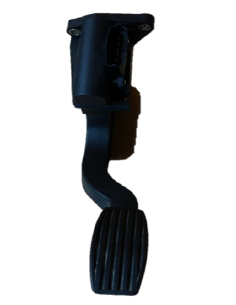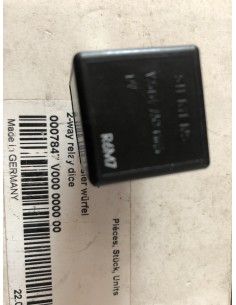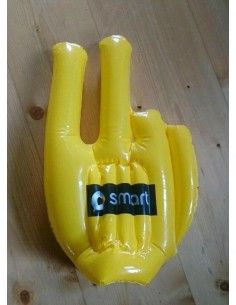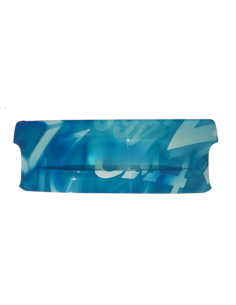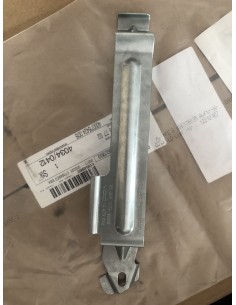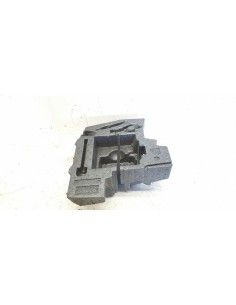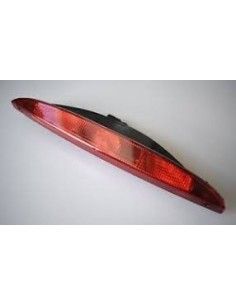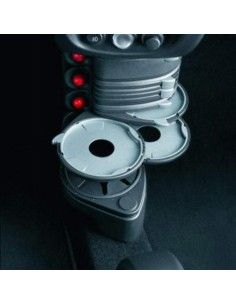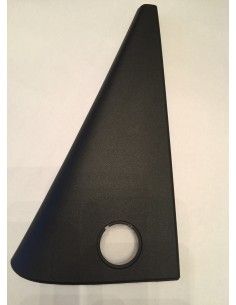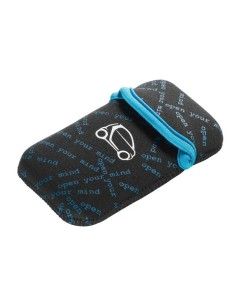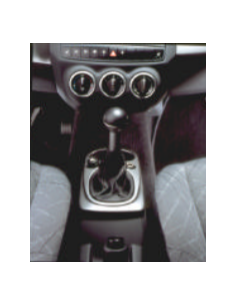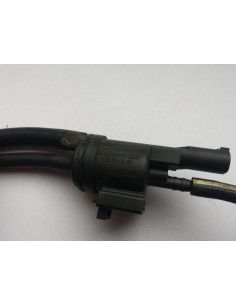List of products by brand SMART
What's smaller than a Mini? Why a Smart, of course. Small enough to weasel in and out traffic downtown during rush hour, very fuel efficient, very easy to park and still stylish enough to be wanted by the posh people. That's what Swiss watch makers Swatch and Daimler AG had in mind when they designed the Smart.
More| Industry | Automotive |
|---|---|
| Founded | 1994 |
| Headquarters | Böblingen, Germany |
Key people | Annette Winkler CEO, 2010–present |
| Products | Microcars |
| Owner | Daimler AG |
| Website | www.smart.com |
Smart uses a lowercase logotype in its branding and a logo incorporating the letter "c" for "compact" and an arrow for "forward thinking".
The design concept for Smart's automobiles began in the late 1980s, associated with Swatch. After a period of backing by Volkswagen, the first model was finally launched by Daimler-Benz in October 1998. Several variants on the original design have been introduced, with the original design, called the Fortwo, now in its second generation and available as an electric version.
Smart models are marketed globally, including in Asia, North and South America, Australia and in Europe—and are available in internal combustion, electric and sport models.
Origins
In the late 1980s, SMH (makers of the Swatch brand of watches) CEO Nicolas Hayek began developing an idea for a new car using the same type of manufacturing strategies and personalization features used to popularize Swatch watches. He believed that the automotive industry had ignored a sector of potential customers who wanted a small and stylish city car. This idea soon became known as the "Swatchmobile". Hayek's private company Hayek Engineering AG began designing the new car for SMH, with seating for two and a hybrid drivetrain.[2]
While design of the car was proceeding, Hayek feared existing manufacturers would feel threatened by the Swatchmobile. Thus, rather than directly competing, he preferred to cooperate with another company in the automotive industry. This would also relieve SMH of the cost burden in setting up a distribution network. Hayek approached several automotive manufacturers and on July 3, 1991, he reached an agreement with Volkswagen to share development of the new project.[3]
By 1993, Ferdinand Piëch had become CEO of Volkswagen and he immediately sought to terminate the project with SMH. Volkswagen had already been working on their own "three-litre car": a car which would consume three litres of fuel per 100 km of driving (the eventual Volkswagen Lupo 3L). Volkswagen's own concept was believed to be a better business proposition, featuring four seats and more cargo room.[4]
Hayek had suspected that Piëch would seek to end the agreement with SMH upon his ascendancy to the CEO position; therefore, he discreetly began approaching other car companies with the Swatchmobile project. Rebuffed by BMW, Fiat, General Motors and Renault, he finally reached an informal agreement with Daimler-Benz AG, maker ofMercedes-Benz cars.[5]
A deal was announced on March 4, 1994, at a press conference at Mercedes-Benz headquarters in Stuttgart that the companies would join forces in founding Micro Compact Car AG (MCC). 49% of the initial capital of 50 million Swiss francs were provided by SMH and the remaining 51% by Daimler-Benz. The company consisted of two subsidiaries: MCC GmbH based in Renningen (a suburb of Stuttgart) which would design the car, and the then-unnamed manufacturing plant. SMH Auto SA, owned by Hayek, would design a hybrid electric drive system for the car, while Hayek Engineering would audit the design and manufacturing.[6]
The press conference also featured the debut of two concept cars: the eco-sprinter and eco-speedster, styled by Mercedes-Benz's design studio in California.[7] The cars were similar to the eventual smart City-Coupé. No mention was made of the fact that SMH had no input in the design of these concepts,[8] and they were badged as Mercedes-Benzes.
By the end of April 1994, MCC had set up a head office in Biel, Switzerland.[9]
Company history
Three co-directors were immediately named to head the new company: designer and engineer Johann Tomforde and financial administrator Christoph Baubin from Daimler-Benz, and marketing manager Hans Jürg Schär, who spearheaded the original Swatch marketing campaigns in the mid-1980s. Tomforde had been working on the Mercedes City Car (coincidentally abbreviated MCC) project at Daimler-Benz since 1990, which produced the aforementioned eco-sprinter and eco-speedster concepts as well as theVision-A concept, which eventually became the Mercedes-Benz A-Class.[10]
One of the first controversies at MCC was the name of the car itself. Nicolas Hayek insisted it retain Swatch in some way: "Swatchmobile", or "Swatch Car". Daimler-Benz refused, and pushed for a neutral name.[11] The final selection was smart, an acronym that had been previously used internally by MCC for Swatch Mercedes Art.[12]
By May 1994, the co-directors had identified 74 potential sites for the assembly plant. The final site was announced on December 20, 1994: Hambach, France.[13] The purpose-built factory quickly gained the nickname "Smartville".
Tomforde devised a modular system of assembly for the car, insisting suppliers design and assemble, and even install their own modules onto the final car, at the new plant using their own employees thus reducing the cost overhead for the parent companies and divesting MCC of the financial and legal liabilities for those parts. It also provided a fiscal framework whereby MCC could share the development costs with the suppliers, rather than having to fund the entire project themselves.[14] MCC secured contracts with suppliers to design and supply almost all parts of the car: seats by Faurecia, interiors by VDO, chassis and door modules by Magna, door panels by Dynamit Nobel, and suspension by Krupp.[15]
Despite offloading a substantial amount of the development on the suppliers MCC required more capital. Recapitalization by Daimler-Benz increased their share of ownership in the company to 81%, leaving SMH with only the remaining 19%.[16]
The assembly plant opened on October 27, 1997, with a ceremonial ribbon-cutting by then-French President Jacques Chirac and German Chancellor Helmut Kohl.[17]Introduction of the new smart city-Coupé was planned for March, 1998, however dynamic instability of the prototypes prompted Daimler-Benz to announce postponing the launch until October, 1998. Johann Tomforde was replaced as chief engineer by Gerhard Fritz.[18] Fritz lowered the centre of gravity, widened the track, stiffened the suspension, changed the steering, and added ballast weight to the front of the car in order to increase its stability in emergency avoidance manoeuvres (notably the Swedish "moose test").[19]
The car launched successfully in nine European countries in October 1998, but the final design did not fulfill Hayek's expectations. Hayek pushed for a hybrid drivetrain but the final product used a relatively conventional gasoline engine. Shortly afterward Daimler-Benz bought out SMH's remaining stake in the company.[20] MCC was now a wholly owned subsidiary of Daimler-Benz (which soon merged with Chrysler Corporation to become DaimlerChrysler). The office in Biel was shut down and operations were consolidated at the MCC GmbH design centre in Germany. On January 1, 1999, MCC GmbH changed its name toMCC smart GmbH,[21] and by 2000, it dropped the last vestiges of the association with SMH, becoming smart GmbH.[22]
The model line was subsequently expanded to include the Roadster a rear-engine, rear-drive and four-door, four-seat supermini aptly named Forfour (the original City-Coupé was renamed Fortwo to fit the new naming scheme).
source: Wikipedia, the free encyclopedia
Less

